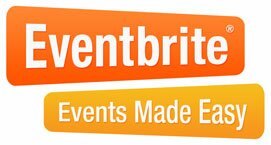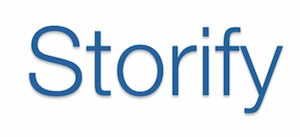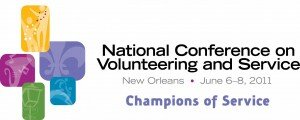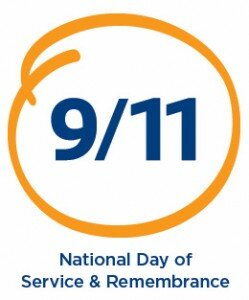Today’s post originally appeared on the National Conference on Volunteering and Service blog. Follow the NCVS blog for news about the conference!
-
The 2011 National Conference on Service & Volunteering (NCVS) is nearly here!
It will be held June 6th – 8th in New Orleans – The Big Easy!
Thanks to social media, there are lots of ways you can participate online – whether you’re there or not!
<-strong>Facebook
“Like” the so that the official wall posts show up in your Facebook news feed.
You are welcome and invited to post thoughts, ideas, etc. to The National Conference on Volunteering & Service Facebook page. Especially if you know a good place to eat in New Orleans!
This year, we’ll be sharing the opening and closing plenary on Livestream, and you’ll be able to watch them on your Facebook page! Keep an eye out on the NCVS Facebook page for a link that you can share on your wall and watch!
 Eventbrite
Eventbrite
This free tool will allow you (or anyone) to organize an event around conference and invite anyone.
Want to host a breakfast to discuss the topic of your dreams?
Want to organize an affinity group meetup?
Want to suggest an after-hours meet up spot?
You can do all of this with eventbrite.
Check out what your fellow conference attendees are organizing so far.
 Blogging
Blogging
You are invited to write a blog post (for your own blog or as a guest post on ours) about a session you’re excited about leading up to conference or reviewing a session you attended afterward.
Blogging is a great way to share what you’re excited about and/or what you’ve learned.
The HandsOn Blog editorial guidelines are here and the National Conference Blog editorial guidelines are here.
If you write a post for your own blog, send us a link to it at and we’ll be able to share it
Twitter
to hear all the official conference tweets.
Additionally, follow the conference conversation by . (The search bar is located in the right sidebar of your Twitter homepage.)
Each NCVS workshop session and forum is assigned a unique session #hashtag.
While the overall conference conversation will take place on the #NCVS hashtag, you can follow individual session twitter streams by searching on the unique session #hashtag.
Join the conversation by adding “#NCVS” to your tweets — adding that hashtag in your tweet is the way to have your tweet show up in the conference twitter stream.
You can also follow HandsOn Network ; Points of Light and CNCS
It’s super easy to follow twitter conversations using your cell phone so before conference, you might want to download a cell phone application for managing Twitter.
Want to follow conference speakers? How about conference speakers by focus area? No problem. Check out the and follow those that match your interests!
 Foursquare
Foursquare
Foursquare at conferences can be fun. Want to know who’s savvy and in the room with you at any given NCVS session? Check-in using Foursquare and you’ll be able to see who else is at conference, and who you might want to meet!
Maybe you’ll even unlock a special badge!
 Delicious
Delicious
Delicious is a social bookmarking web service for storing, sharing, and discovering web bookmarks.
On Delicious, users can tag each of their bookmarks with freely chosen terms.
A combined view of everyone’s bookmarks with a given tag is available; for instance, the URL http://delicious.com/tag/ncvs displays all of the most recent links tagged with NCVS. You don’t just see the bookmarks that you’ve tagged, though. You get to see what other people have found that fits the same topic!
See all the great NCVS content saved to Delicious and add your own!
Flickr
Share your NCVS photos with everyone using the . You can upload your favorite conference shots photos by joining the group pool and then clicking on the link that says “Add photos.”
If you don’t have a Flickr account, it only takes a minute to sign up for one. All you need is a Yahoo!, Google or Facebook ID
 YouTube
YouTube
YouTube isn’t just a place for piano playing cats – why not record a video of yourself talking about your experience at NCVS, or Send links to your favorite NCVS videos and we’ll add them to our NCVS playlist on !
Send your video links to .
We can’t wait to see you in New Orleans – or online!
 Storify
Storify
Storify is a way to tell stories using social media such as Tweets, photos and videos. You search multiple social networks from one place, and then drag individual elements into your story. You can re-order the elements and also add text to give context to your readers. At the end of each day, we’ll be sharing highlights from the conference. You can make your own social media story and share it, too!
 WiFi
WiFi
Unfortunately, there isn’t public wifi available in the Convention Center. If you have a smart phone, you’ll be able to use most of these tools from your phone. You might be able to use your phone’s connection to drive your computer’s wireless internet, but you’ll have to check with your service provider to find out if you have this option.
If you have a personal portable wireless internet hub it can be a great way to stay connected at conference, and meet some new friends!
Updated 5/18/11:
The National Conference on Volunteering and Service offers complimentary wireless service in all meeting rooms and lobbies. Please look for the SSID NCVS2011 on your wireless device.
In the exhibit hall, Starbucks has provided complimentary wireless service for all attendees and exhibitors. Look for SSID “NCVS” on your wireless device.
The National Conference on Volunteering and Service offers complimentary wireless services in all meeting rooms and lobbies. Please look for the SSID NCVS2011 on your wireless device.
In the exhibit hall, Starbucks has provided complimentary wireless service for all attendees and exhibitors. Look for SSID “NCVS” on your wireless device.
 AppMakr.com is a browser-based platform designed to make creating your own iPhone app quick and easy. Its free drag and drop tool enables anyone to build rich content based apps using a point and click solution.
AppMakr.com is a browser-based platform designed to make creating your own iPhone app quick and easy. Its free drag and drop tool enables anyone to build rich content based apps using a point and click solution. Panabee.com is Brainstorm engine for finding cool names and checking domain availability. The domain name generator sifts through popular spelling or word pairings. Although many domain registrars have domain name spinners to suggest new domain names in case of the one you want is taken, Panabee shows you interesting options.
Panabee.com is Brainstorm engine for finding cool names and checking domain availability. The domain name generator sifts through popular spelling or word pairings. Although many domain registrars have domain name spinners to suggest new domain names in case of the one you want is taken, Panabee shows you interesting options. Quixey.com is a functional search engine for applications. It doesn’t require users to know the name or exact description of app, users simply search “what they want to do,” and Quixey does all the looking. Quixey produces the most relevant search results by searching blogs, forums, social media and other sources to learn about each app.
Quixey.com is a functional search engine for applications. It doesn’t require users to know the name or exact description of app, users simply search “what they want to do,” and Quixey does all the looking. Quixey produces the most relevant search results by searching blogs, forums, social media and other sources to learn about each app. Bufferapp.com is a smarter way to schedule tweets. First, simply work out all your tweets at one point in time during the day. Then, fill up your Buffer with your tweets and Buffer schedules them for you. Simply keep that Buffer topped up and you will then be tweeting consistently all day round, all week long.
Bufferapp.com is a smarter way to schedule tweets. First, simply work out all your tweets at one point in time during the day. Then, fill up your Buffer with your tweets and Buffer schedules them for you. Simply keep that Buffer topped up and you will then be tweeting consistently all day round, all week long. PeerIndex.net is an algorithmic mapping out of the influence on the social web. Similar to Klout, but PeerIndex.net gives users influence rankings in predetermined categories. It’s an interesting way to see how people interact with you on Twitter.
PeerIndex.net is an algorithmic mapping out of the influence on the social web. Similar to Klout, but PeerIndex.net gives users influence rankings in predetermined categories. It’s an interesting way to see how people interact with you on Twitter. Rowfeeder is the latest tool for social media monitoring and analysis.
Rowfeeder is the latest tool for social media monitoring and analysis.

 Blogging
Blogging Foursquare
Foursquare YouTube
YouTube
 This special 3-hour workshop at the
This special 3-hour workshop at the 

 Blake Canterbury started
Blake Canterbury started 
 by Jen Martin, Senior Specialist, Office of Volunteer and Civic Engagement,
by Jen Martin, Senior Specialist, Office of Volunteer and Civic Engagement, ![CTG_red[1]](../wp-content/uploads/2010/10/CTG_red1-150x150.jpg) Nationwide, AARP and AARP Foundation are launching anti-hunger initiatives including volunteer-led food drives
Nationwide, AARP and AARP Foundation are launching anti-hunger initiatives including volunteer-led food drives 
 by ,
by , 
 Our family works to volunteer our time, money and support to the Diabetes cause as much as we can. We ask friends and family to support us as a family as we Walk for a Cure. And then we match the overall cash contribution we raise with our own funds. I also hand out fliers to my church group, my PTO and my bookclub.
Our family works to volunteer our time, money and support to the Diabetes cause as much as we can. We ask friends and family to support us as a family as we Walk for a Cure. And then we match the overall cash contribution we raise with our own funds. I also hand out fliers to my church group, my PTO and my bookclub.

 In our session today, we hope to gather the collective wisdom of those in the room to create a more complete list, but as we head in to our workshop, I’ve outlined a few of our ideas for applying the best practices of traditional volunteer management to distributed action in the social space.
In our session today, we hope to gather the collective wisdom of those in the room to create a more complete list, but as we head in to our workshop, I’ve outlined a few of our ideas for applying the best practices of traditional volunteer management to distributed action in the social space. Make folks feel part of something larger than themselves – all of us want to find meaning in our lives. You’re not just asking for help, you’re offering people an opportunity to contribute, to participate in making a difference. Let this help you overcome your fear that you’re burdening folks with your request.
Make folks feel part of something larger than themselves – all of us want to find meaning in our lives. You’re not just asking for help, you’re offering people an opportunity to contribute, to participate in making a difference. Let this help you overcome your fear that you’re burdening folks with your request. Make it easy – remember volunteers have to be eased into a commitment. Make it quick and easy to take immediate action, ask for specific actions and small commitments first and work up to larger commitments.
Make it easy – remember volunteers have to be eased into a commitment. Make it quick and easy to take immediate action, ask for specific actions and small commitments first and work up to larger commitments.






 Using A Blog
Using A Blog



